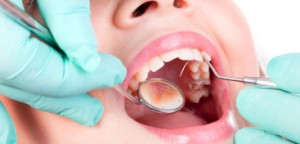 The most common type of dental work across all patients is fillings (aka dental restoration) caused by cavities (aka dental caries). So let’s start there when it comes to getting your fillings refilled.
The most common type of dental work across all patients is fillings (aka dental restoration) caused by cavities (aka dental caries). So let’s start there when it comes to getting your fillings refilled.
Fillings
Ideally, you go to the dentist for an exam twice a year and get X-rays done once a year. That’s ideal because it means if you have a filling that needs replacing, it may get caught before you experience visible cracking or pain. Early detection can also help keep your costs from getting out of hand, due to other procedures that may be required by waiting too long.
Your dentist can determine if your fillings are in good shape by using the instrument called an “explorer.” He or she can see if the edges of the filling have begun to break down, which means the bad bacteria in your mouth has, once again, an inroad to your tooth—bone and nerve. X-rays are used to determine if any decay inside the tooth has occurred due to fillings that have seen better days.
Choosing new fillings
Amalgam
Keep it cheap, or at least less expensive. This type of filling is usually a mix of copper, mercury, silver and tin. It’s known to be strong and long-lasting.
Composite
Go small. For smaller dental restorations, composite fillings are often the go-to. They are a mix of acrylic resin and glasslike particles. They are known to be durable and able to match the color of your teeth.
Glass ionomers
Take the fluoride. Glass ionomers are, as their name indicates, a mix of powdered glass and then acid and fluoride. But the kicker is the fluoride. It’s able to be released, fortifying your teeth over the long haul.
Dentures
Like any product, dentures have a shelf life. Factors in the longevity of your dentures involve the health of your jaw bone and your gums. Periodontal disease, decay or trauma, can cause bone and soft tissue to shift. And gums, which also provide support to dentures, can change, making the fit fail.
Then there’s the fact that the dentures themselves can fail. Acrylic, porcelain and polymer are the materials that comprise most dentures, and they’re made to last. But nothing’s forever. Both the tooth and tissue areas take on bite pressure, so over time cracks happen.
When denture wear requires action, your dentist can perform a relining. Relining is when material is added to the inner plate of your dentures, the part that presses against your gums. This procedure can be done in the office if the adjustment is small. Bigger adjustments typically need to be done in a lab, which means you won’t have teeth for a few days.
According to the American College of Prosthodontists, dentures should be relined or replaced every five to 10 years.
Here are some tips from the American Dental Association when it comes to denture care:
- Placing a denture in water (or a denture cleanser solution) when it is not being worn helps the denture retain its shape, remain pliable and keeps it from drying out.
- Dentures should never be placed in hot or boiling water, which could cause them to warp.
- Denture adhesives are not a remedy for ill-fitting dentures, which may need to be relined or replaced to prevent oral sores from developing.
- A company earns the ADA Seal of Acceptance by submitting scientific evidence that demonstrates the safety and efficacy of its product, which the ADA Council on Scientific Affairs evaluates according to objective requirements.
Implants
Finally, the penultimate natural teeth replacement: implants. Never cheap, these babies—when made right—look as natural as, well, natural teeth. And some of their parts, such as the screws that fasten the implants to your jaw can last, well, longer than you. However, somewhere between one and two decades is the lifespan of implants. That’s because natural wear and tear eventually wears out the crown.
Want them to last as long as possible? Take one guess what you have to do. That’s right, brush and floss regularly and see your dentist a couple times a year.







Leave a Reply